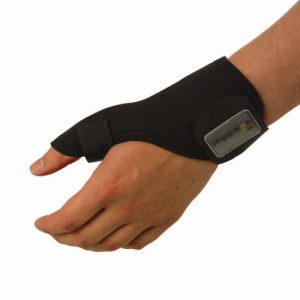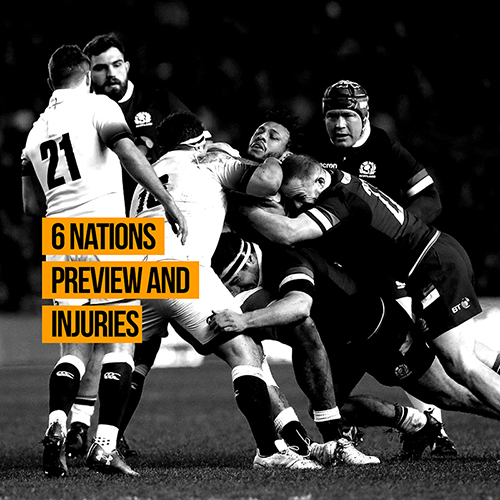The competition is finely poised as it heads in to the penultimate weekend, with an Irish bonus-point potentially enough to secure victory of the Six Nations title.
That’s if England fail to secure a bonus point when they travel to just north of the Paris to the Stade de France to face Jacques Brunel’s France side.
Assuming they get past Scotland with that bonus point, the Irish will be watching on as they get under way first on Saturday, with England v France the second of the day’s games.
Elsewhere, there could be some scores to settle for Italy after Wales named a much changed side in what has been perceived as a lack of respect on the part of Warren Gatland’s team.
Let’s take a look at the team news for all three games.
Ireland v Scotland
The main headline ahead of the vital clash at the Aviva Stadium is that tight-head Tadhg Furlong returns from a hamstring injury to lead Ireland’s front row.
That means Andrew Porter will drop to the bench, while Garry Ringrose, who has recovered from an ankle knock in January, replaces Chris Farrell at centre after Farrell sustained a knee injury.
Elsewhere Jordan Larmour, Jack Conan and Iain Henderson are recalled among the replacements for Joe Schmidt’s side.
Off the back of their win against England, Scotland will hand a first start to Blair Kinghorn, who made his debut as a replacement in the victory at Murrayfield.
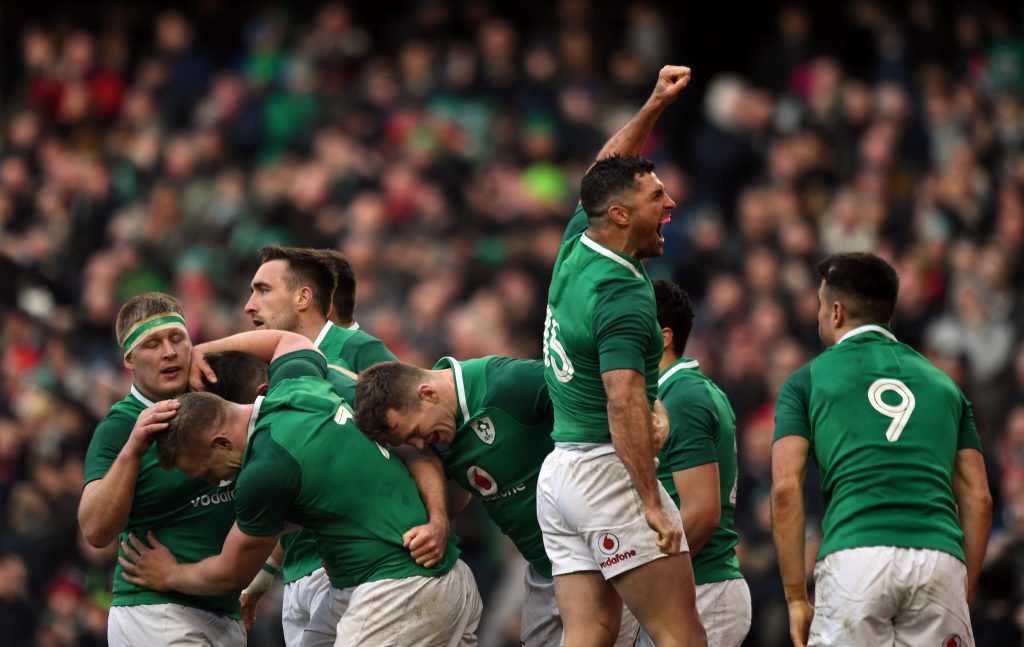
He’ll replace Tommy Seymour, who is set to miss out thanks to a back injury, while Lee Jones and Fraser Brown return to the bench, Brown replacing the injure Scott Lawson.
Ireland: Kearney; Earls, Ringrose, Aki, Stockdale; Sexton, Murray; Healy, Best, Furlong, James Ryan, Toner, O’Mahony, Leavy, Stander.
Replacements: Cronin, McGrath, Porter, Henderson, Murphy, Marmion, Carbery, Larmour.
Scotland: Hogg; Kinghorn, H Jones, Horne, Maitland; Russell, Laidlaw; Reid, McInally, Berghan, Gilchrist, J Gray, Barclay, Watson, Wilson.
Replacements: Brown, Bhatti, Nel, Swinson, Denton, Price, Grigg, L Jones.
France v England
The big news for Eddie Jones’ already depleted side is that captain Dylan Hartley has been officially ruled out due to a calf injury.
It will be just the second time Hartley hasn’t captained the side under Jones, the first coming against Samoa last autumn.
In his absence, Owen Farrell will lead the side after escaping punishment for his part in the tunnel fracas before England’s loss to Scotland last month.
Elsewhere Mike Brown has been left out for the first time under the Australian coach, with Anthony Watson switching to full-back, while Elliot Daly returns on the wind and Ben Te’o takes Jonathan Joseph’s place at outside centre.
Jones said of the game: “After a loss we want a response from the players this week.
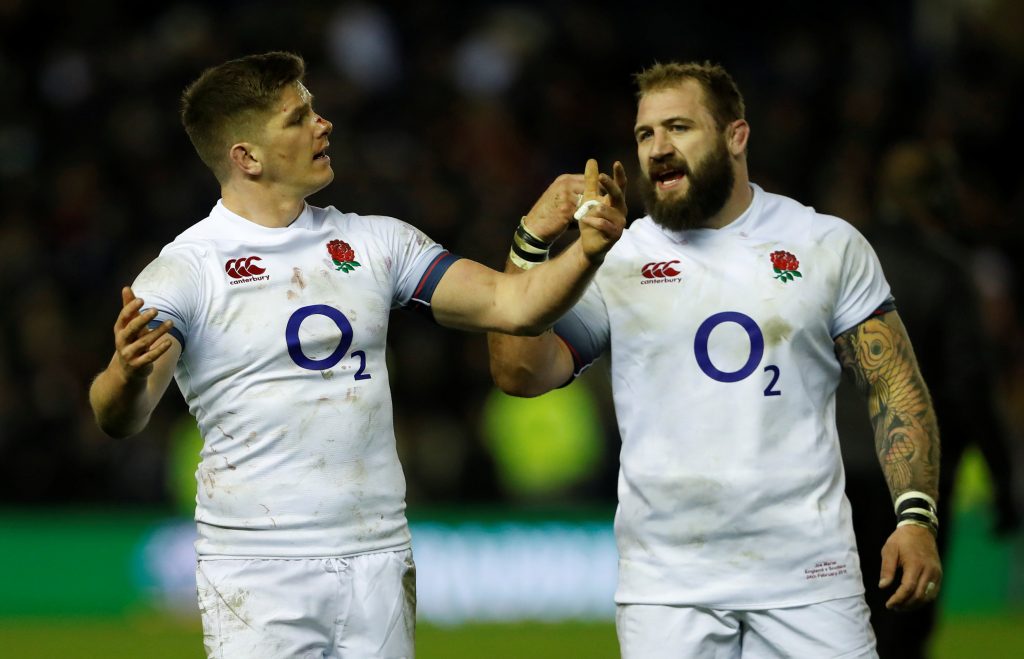
“Against France we want to be brutal and aggressive on the gain line and to play with a great tactical discipline.”
Meanwhile there’ll be just one change for France as Francois Trinh-Duc replaces Lionel Beuxis at fly half.
France: Bonneval; Fall, Bastareaud, Doumayrou, Grosso; Trinh-Duc, Machenaud; Poirot, Guirado (capt), Slimani, Gabrillagues, Vahaamahina, Lauret, Camara, Tauleigne.
Replacements: Pelissie, Priso, Gomes Sa, Taofifenua, Galletier, Couilloud, Beauxis, Fickou.
England: Watson; May, Te’o, Farrell (capt), Daly; Ford, Care; Vunipola, George, Cole, Launchbury, Itoje, Lawes, Robshaw, Hughes.
Replacements: Cowan-Dickie, Marler, Sinckler, Haskell, Simmonds, Wigglesworth, Joseph, Brown.
Wales v Italy
Following two defeats on the road, Warren Gatland has decided to overhaul his side and make ten changes before the visit of Italy to the millennium stadium.
Only Steff Evans, Hadleigh Parkes, Liam Williams, Cory Hill and Gareth Davies survive from the loss to Ireland a fortnight ago.
George North will go back to the right wing with Gareth Anscombe named as the starting fly-half, while Taulupe Faletau returns at number eight to captain the side.
With Italy having yet to name their side, all the focus has been on the Wales selection, but Gatland has been bullish about his decisions: “We are bringing in a lot of quality and a lot of experience with the likes of Bradley Davies, Justin Tipuric, George North and Taulupe.
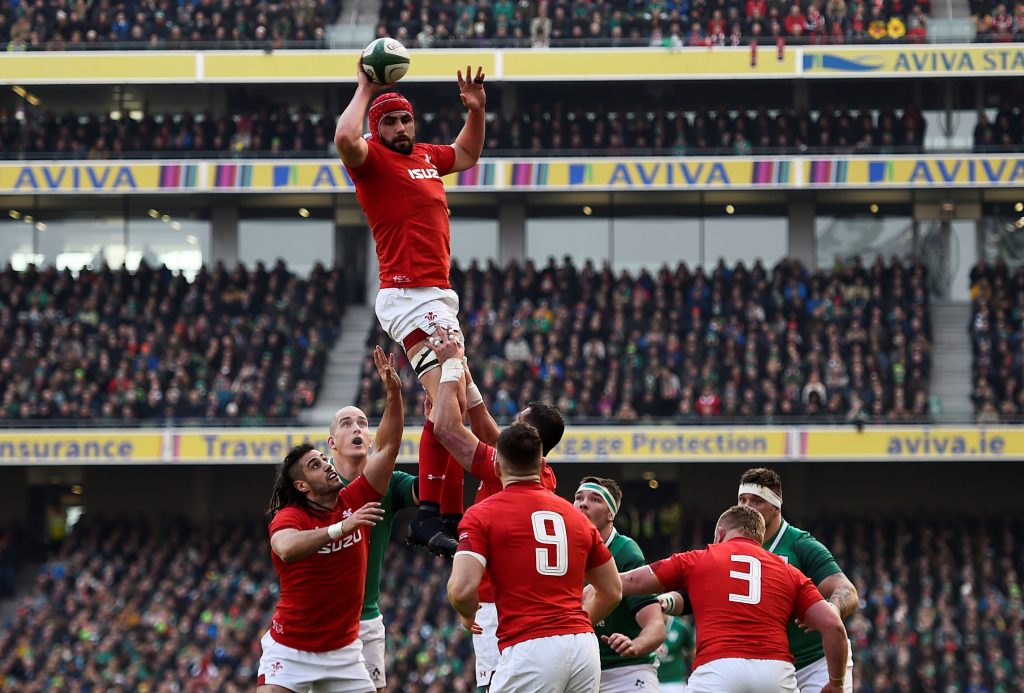
“Add into that James Davies who gets his first cap, Elliot Dee who gets his first start – this is a great opportunity for them to play tournament rugby.
“It is challenging making changes, but we have picked a really exciting team and Sunday is their chance.”
Wales: L Williams, North, Watkin, Parkes, S Evans; Anscombe, G Davies; Smith, Dee, Francis, Hill, B Davies, Tipuric, J Davies, Faletau (capt).
Replacements: Owens, R Evans, Lee, S Davies, Jenkins, A Davies, Patchell, Halfpenny.
Italy: TBA
Now, if you’re interested, which we’re sure you are, check out some common rugby injuries, and how to treat them below….
Hamstring Strain
What is it?
Full time training in the professional rugby union era has led to players being bigger, fitter, faster and stronger than ever before. These increased physical demands have added extra strain and risk to the lower limbs and with that, and increase in injuries. The hamstring strain is a prime example, being the most common injury to affect England’s World Cup winning squad back in 2003.
During sprinting activities, the hamstring muscle can be forcibly stretched beyond its limits and the muscle tissue becomes torn. A tear in a muscle is referred to as a strain and, depending on its severity, is classified as a first, second or third degree strain.
Prevention
A warm up prior to matches and training is thought to decrease muscle strain injuries because the muscle is more extensible when the tissue temperature has been increased by one or two degrees. A good warm up should last at least 20 minutes, starting gently and finishing at full pace activity. Practicing sport specific activities helps tune coordination and prepare mentally for competition.
We recommend compression shorts for providing extra warmth around the Hamstring region.
Treatment
The immediate treatment of any muscle injury consists of the PRICE protocol – protect, rest, ice and compression and elevation (never apply ice directly to the skin). All injuries should be reviewed by a doctor or chartered physiotherapist. Depending upon the severity of the hamstring injury, the leg must be rested from sporting activity for between a couple of weeks and 3 months.
We recommend the use of an ice bag for the safe application of ice.
Acromio Clavicular Joint Sprain
What is it?
The Acromio Clavicular joint, or the ‘AC’ joint is part of the shoulder complex. Its exact location is situated at the outside point of the collar bone where it attached to the front of the should blade.
A sprain of the AC joint refers to damage to the ligaments of the joint. The AC joint ligaments are most commonly damaged through a fall onto the tip of the shoulder, although as we mentioned earlier, the frequency at which rugby players get injured during tackles means this injury is never too far away.
Prevention
There are ways to reinforce and shore-up the ligaments of the AC joint. Many rugby players find that the reassurance provided by a shoulder support, such as our Ultimate Performance Neoprene Shoulder Support, can be helpful.

However it’s worth taking in to consideration that due to the nature of rugby, where collisions are frequent and hard, it is impossible to totally prevent these injuries.
Treatment
In the initial stage of the injury pain-relieving medication is obviously helpful. Ice packs should be applied to the injured shoulder for 20 minutes every two hours (never apply ice directly to the skin).
A chartered physiotherapist can apply a taping technique, which will push the collar bone downwards, and in more severe AC joint sprains the shoulder may be put in a sling and rested. In more minor AC joint sprains, where there is only a small amount of ligament damage, it may be possible to resume rugby activities in 7-10 days.
Fracture Dislocation of the Thumb
What is it?
This injury has its roots as far back at the 1800’s. Descried by Dr Edward Bennet, who suffered a fracture dislocation of his thumb while horse riding in 1885, it is often known, or referred to as ‘Bennet’s Fracture’.
Anatomically speaking it is a fracture of the joint surface between the thumb, wrist and subsequent detachment of the deep ligaments which normally stabilise the joint.
Due to the long-term problems and functional instability that can occur, many orthopaedic consultants advocate fixing the problem surgically.
Prevention
Not a great deal. Get your chartered physiotherapist to tape your thumb, but even then, a fracture dislocation of the thumb may occur due to the collision nature of rugby.
For some taping options, check out our range of taping and strapping.
Treatment
As far as thumb injuries go, this is a pretty nasty one. It can cause potentially long-term functional impairment of hand function, that’s means all fracture dislocations of the thumb should be assessed by an orthopaedic consultant.
Of course, as is usual with a lot of injuries, in the firs few days following a fracture dislocation of the thumb it is important to follow the PRICE protocol – protection, rest, ice, compression and elevation (never apply ice directly to the skin).
Icing the area for twenty minutes every couple of hours may help allevite the pain but medication subscribed by a doctor may be necessary.
Surgery is often required for this injury and the surgeon may immobilise the thumb in a plaster. Once this is removed, some form of protection for the joint is necessary during the rehab period.
A thumb stabiliser such as the PhysioRoom.com Thumb Stabiliser Support Splint can be helpful in protecting the joint between exercise sessions.
